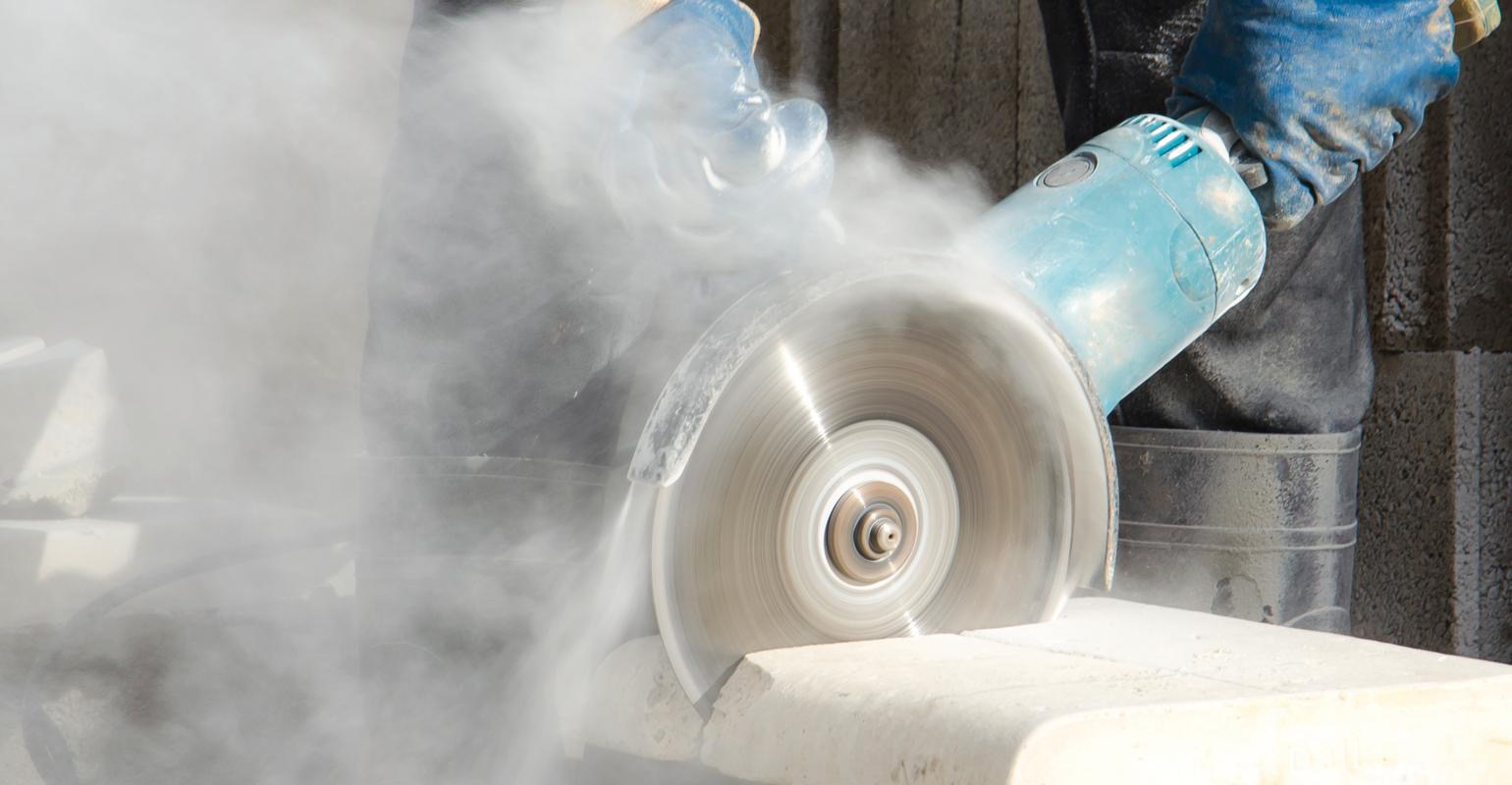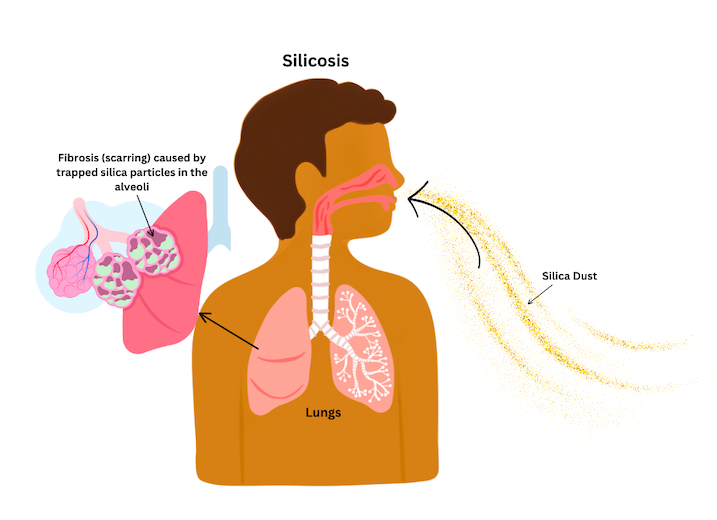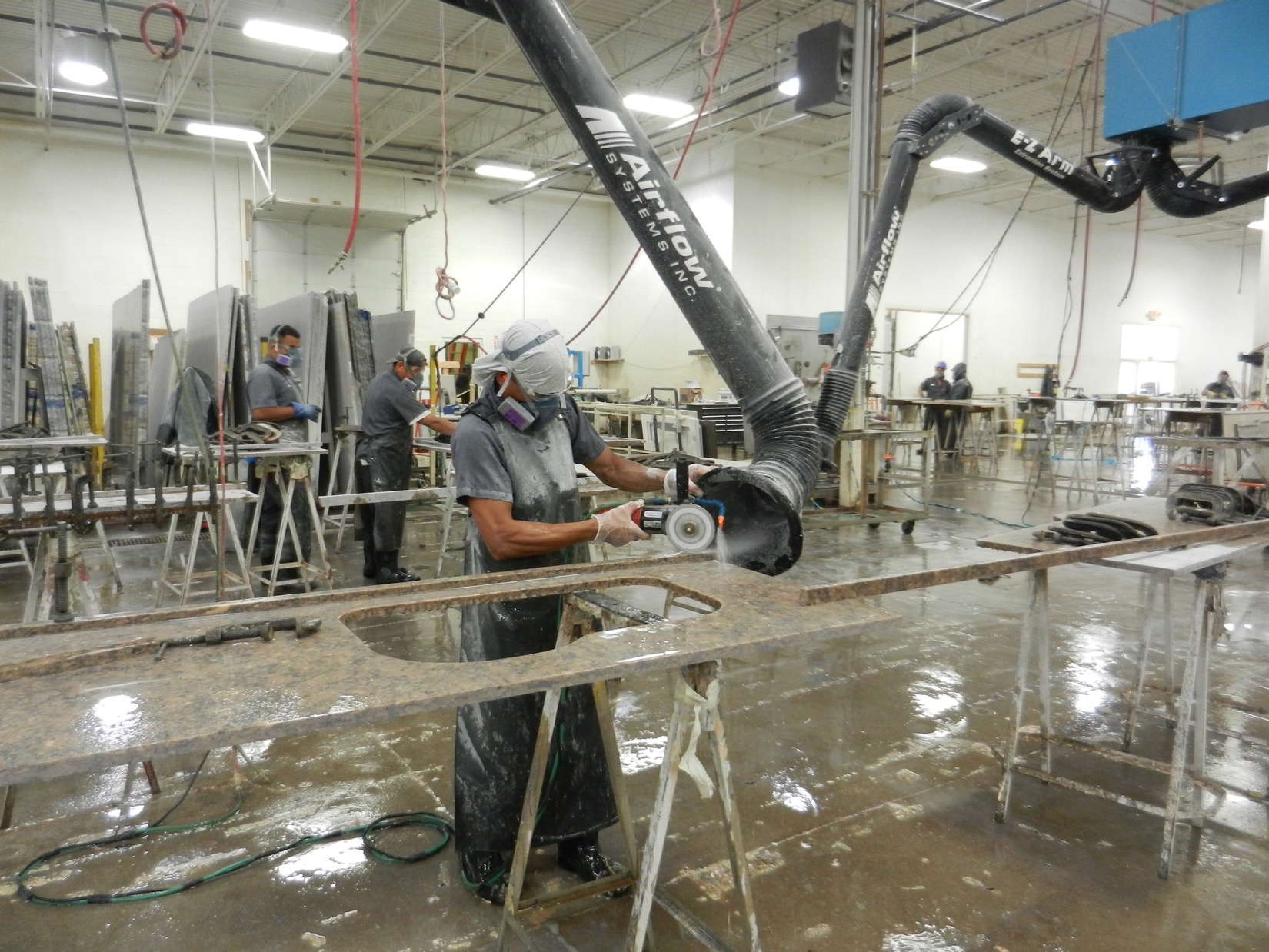

People who work in industries that involve cutting, chipping, drilling, or grinding of materials that contain silica dust, such as engineered stone, quartz, granite, sandstone, slate, soil or other natural materials are at higher risk of suffering from silicosis. Workers who cut stone countertops specifically engineered stone, are at the highest risk because engineered stone

People don’t experience any symptoms in the early stages of silicosis, and might not notice any problems until many years later.
Over time, silica can build up and cause damage to the lungs, causing persistent dry cough, shortness of breath and chest pain, weakness and extreme fatigue and other symptoms that may be mistaken for a cold, the flu, asthma, or COVID-19.
The symptoms can continue to get worse, even if you're no longer exposed to silica dust.


There is no cure for silicosis. Doctors can treat symptoms to provide some comfort such as oxygen therapy and inhalers and in a few cases a lung transplant can extend your life.


The National Institute for Occupational Safety & Health (NIOSH) can do a health evaluation at your worksite.